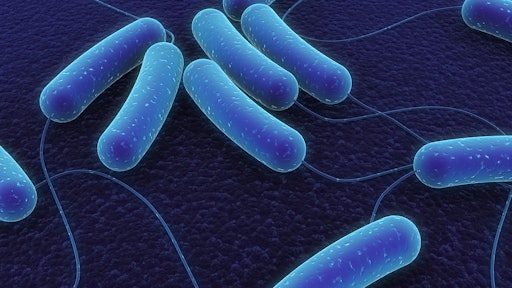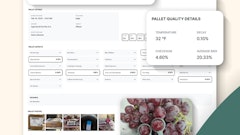
For businesses involved in the food and beverage supply chain, anticipation of risks is of paramount importance. In addition to the risks inherent in the manufacturing of consumer products in general, players in the food industry have even more to worry about in the production, storage and distribution of their products.
For instance, depending on the type of product, environmental conditions in production, storage or transport must be tightly controlled to account for delicate or perishable goods. The production itself needs to be closely monitored to comply with an ever-expanding and evolving regulatory framework.
Any adequate risk management strategy necessarily involves insurance. Property insurance can protect against fires and damage to infrastructure. Cargo insurance can protect against loss or damage to consumer goods that occurs during transit. While these risks are significant, a worst-case scenario for a company in the food industry can be loss arising out of contamination.
The threat of government investigations, widespread product recalls and consumer lawsuits are only a few among the many consequences of a contaminated product line.
Risk managers and industry professionals focus on confronting and preventing contamination but often can overlook the type of insurance coverage necessary to protect against contamination. This is understandable given the often opaque insurance policy language and exclusions and the unsettled state of the law that can govern the policies.
The question almost every food and beverage industry professional asks when contamination occurs is: Will my insurance cover this?
As the insurance industry becomes more specialized, policy-holders are confronted with very specific insurance policy options that provide coverage for narrower types of risks than those covered by a traditional general liability policy or fire and casualty insurance policy. However, this specialization can lead to confusion and gaps in coverage.
All-risk policies
A company might purchase what is known as an “all-risk” insurance policy as an attempted catch-all to protect against any number of causes of first-party property losses or damage. However, these policies often exclude from the available coverage a number of specific perils —perils that a policyholder might not realize are outside of coverage.
Instead, policyholders may be required to seek out specific coverage for a variety of risks, making any risk management program more cumbersome and labor intensive.
Food contamination is often among those perils excluded from all-risk insurance policies. However, in the event of a contamination event, policyholders should not throw in the towel on coverage under an all-risk policy. This is because many all-risk policies contain an exception to the contamination exclusion. This exception applies where there is direct physical loss resulting from other damage that is not excluded by the policy.
In other words, coverage for contamination may be available if the contamination was the direct result of a fire, physical damage or defects in a building or equipment, or some other hazard that the policy covers.
A case in point
For example, a cheese manufacturer in Colorado experienced a disastrous fruit juice concentrate spill at a warehouse owned by a third party. The spill was so massive that it caused off-flavor in nearly 8 million pounds of cheese. The manufacturer sought insurance coverage under its all-risk policy. The insurer denied coverage, claiming that the policy’s contamination exclusion barred coverage for the spill.
However, after the manufacturer filed a lawsuit against its insurer, the judge agreed that the manufacturer would be entitled to coverage if it could establish that the contamination was caused by other damage that the policy was designed to cover. The cheese manufacturer maintained that the contamination was actually caused by the deteriorating conditions and poor maintenance of the third-party warehouse—a peril that was within the scope of the all-risk policy coverage. This ruling demonstrates that an all-risk policy might cover food contamination even where such a hazard appears to be excluded.
In other cases, however, policyholders have not had the same luck in obtaining coverage for a contamination event from an all-risk policy under the “other physical loss” exclusion. A few years ago, HoneyBaked Foods Inc. was forced to recall and destroy a line of its ham and turkey products after the U.S. Department of Agriculture’s Food Safety and Inspection Service (FSIS) discovered listeria monocytogenes in those products.
HoneyBaked traced the source of the listeria to hollow rollers on a conveyor system in one of its facilities. HoneyBaked faced losses associated with the disposal of the products and business interruption while it dealt with the recall.
In a lawsuit against its insurer, HoneyBaked sought coverage under an all-risk policy on the grounds that the damage was covered because it was caused by the hollow roller system itself—an equipment defect that was within the scope of the all-risk policy coverage.
HoneyBaked said the contamination exclusion did not apply because a defect in the hollow rollers caused the contamination due to the rollers’ hollow designs allowing it to harbor unseen bacteria. The court rejected this argument and held that the listeria was what damaged the product, not the hollow rollers.
These cases underscore the importance of reading policies in total, especially where exclusions may contain certain caveats under which coverage may be available.
Food contamination insurance coverage
More reliable, and ideally more predictable, sources of insurance protection for food contamination events are specialty policies that provide coverage for “accidental contamination.” This type of coverage generally applies to losses caused by the accidental presence of a contaminant into a policyholder’s food product line.
Coverage under an accidental contamination policy requires “accidental or unintentional contamination, impairment or mislabeling of an insured product” during a certain manufacturing or distribution period that has caused or would cause “bodily injury, sickness, disease, or death” within a determinate period of time after consumption or use.
Establishing contamination
One issue that arises when a policyholder seeks coverage under this type of policy is establishing that actual, as opposed to potential, contamination has taken place. A recent case in California involved a food manufacturer that was notified by a third-party supplier of beef spice mix that one of the ingredients in the mix had tested positive for salmonella.
Because the manufacturer used the beef spice mix in many of its products, the FSIS required a recall of all products containing the mix.
Ultimately, an investigation by the manufacturer and FSIS revealed that none of the manufacturer’s product tested positive for salmonella. Despite the food products being free of salmonella, the manufacturer incurred big costs conducting the investigation and product recall. However, the insurer denied coverage because there was no actual contamination, but only the possibility or threat of contamination. Because there was no contamination, a court ruled there was never any threat of bodily injury and the policy did not provide coverage.
Wornick Foods, an Ohio manufacturer that made meals-ready-to-eat (MREs) for the U.S. government, experienced a similar issue in obtaining coverage for contamination related losses. One of the products incorporated by Wornick into the MREs was a dairy shake product that was manufactured by a third party. Wornick was notified that these packets had tested positive for salmonella.
The government demanded that Wornick recall and replace all the potentially tainted dairy shake packets. Wornick’s investigation later revealed that it had not actually received any dairy shake packets containing salmonella. Despite the expenses associated with the recall, a court held there was no coverage because none of the insured’s products were actually contaminated.
While “actual contamination” may be required under many policies, policyholders should read their policies carefully because even a seemingly subtle variation in the policy language can lead to a different result regarding coverage.
For example, Foster Farms, in 2013, was ordered to suspend its operations due to its non-compliance with federal sanitation regulations and the presence of salmonella in its facilities. The insurer argued that Foster could not establish actual contamination.
However, the policy language at issue did not require “contamination” for coverage, but rather only an “error in the production, processing, or preparation of” Foster’s products. The court therefore held that actual contamination was not required under this policy language. Policyholders should be mindful of these nuances in policy language when purchasing or renewing coverage, because they can have dramatic effects on the breadth of risks within the scope of coverage.
Establishing danger
In addition to establishing that there has been contamination, to trigger insurance coverage, policyholders may also need to show that any such event actually poses a risk to consumers.
In some cases this is easy. In the case involving Foster Farms, for instance, the insurer argued that the salmonella would not necessarily harm consumers so long as the chicken was cooked properly before it was eaten. The court rejected this argument for two reasons.
First, some consumers had been hospitalized after consuming Foster’s chicken, and second, the FSIS determined that the product was dangerous even with proper cooking.
Not all instances of contamination, however, pose a sufficient danger to consumers to trigger coverage under food contamination policies. An Illinois manufacturer of frozen burritos discovered that its products tested positive for listeria due to undercooking. The USDA held a large amount of the manufacturer’s products while an investigation proceeded. Ultimately, it was determined that while the burritos contained listeria, none contained strains that were actually harmful to consumers. As a result, the policy did not provide coverage for the manufacturer’s losses because the contamination was not actually dangerous.
A similar case involved a producer of sausage breakfast sandwiches that failed to identify the presence of monosodium glutamate (MSG) on the label. The company recalled its products and sought to recover its losses under its contamination coverage. The company maintained that MSG posed a risk to the general population, whereas the insurer argued that only sensitive populations faced risks from MSG. The issue of whether the presence of MSG was sufficiently harmful to trigger coverage was for a jury to determine.
Companies whose operations fall within the supply chain should incorporate a careful analysis of available insurance products as part of any risk management strategy. It is important to perform an independent review of policy language, exclusions and even exceptions to exclusions in order to identify any uninsured risks.
The good news is that there is coverage available to protect against many of the financial ramifications of a contamination event. However, policyholders should consult with professionals when purchasing coverage and when submitting proofs of loss or claims to an insurer. If gaps can be identified at the time of purchase, insurers may be receptive to adding language to increase the scope of covered risks.



























